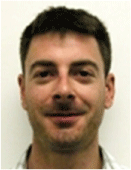Potential impacts of shale and tight gas developments on unconfined aquifers – a chemical screening framework
Rebecca Doble A B , Dirk Mallants A , Yousef Beiraghdar Aghbelagh A , Dennis Gonzalez A , Phil Davies A , Luk Peeters A and Russell Crosbie AA CSIRO, Glen Osmond, Australia.
B Corresponding author. Email: Rebecca.doble@csiro.au
The APPEA Journal 61(2) 389-394 https://doi.org/10.1071/AJ20022
Accepted: 18 March 2021 Published: 2 July 2021
Abstract
The Geological and Bioregional Assessment Program examines the potential impacts of shale, tight and deep coal gas development on water and the environment. A key part of the project was quantifying the potential for a decline in the water quality of unconfined aquifers due to unintentional chemical release at the soil surface. To assess this hazard, a quantitative analysis of chemical migration pathways was undertaken, which involved the estimation of contaminant attenuation by dilution and dispersion in soil and groundwater. This provided a conservative screening approach to identify areas for further analysis. Attenuation calculations involved one-dimensional advection-dispersion (AD) simulations through the unsaturated zone, and three-dimensional AD solute transport within the surficial aquifers. Dilution factor (DF) relationships for the combined effect of attenuation in the unsaturated and saturated zone were used to construct spatial maps of the potential for impact on aquifer properties after accidental chemical spills. A higher DF (therefore lower consequence of the surface contamination) was associated with deeper unsaturated zones characterized by heavier soils near the surface, and lower ground water velocities due to lower hydraulic conductivity and/or hydraulic gradient in the saturated zone. The framework was applied across the Cooper Basin and Beetaloo Sub-basin and resulted in two types of maps. The first identified areas being more susceptible to contamination if soil remediation does not occur within a 10-year period. The second map shows the spatially variable combined DFs for a ground water receptor, which may be used to develop site-specific management plans and mitigation measures.
Keywords: GBA region, sustainable development, Cooper Basin, Beetaloo Sub-basin, shale gas, tight gas, deep coal gas, baseline, unconventional gas development, geology, hydrogeology, prospectivity, chemical screening, chemical transport modelling, groundwater impacts, causal network, causal pathway, hazard analysis, impact analysis, potential impact, gas resources, water resources.

Rebecca Doble is a Senior Research Scientist leading the Groundwater Systems team of CSIRO Land and Water with 16 years of experience in groundwater modelling, specializing in recharge and evapotranspiration and the use of novel datasets to constrain groundwater models. Dr Doble graduated from the University of Adelaide with Honours in Civil and Environmental Engineering in 1998 and was awarded a PhD in Hydrogeology from Flinders University in 2004. |

Dr Dirk Mallants is a Senior Principal Research Scientist, leading the Environmental Tracers team of CSIRO Land and Water. He has a background in soil and groundwater hydrology with more than 25 years of experience in characterizing and modelling water flow and contaminant transport in complex environments – typically variably saturated soils, aquifers and low-permeable porous media including deep clay formations. |

Yousef Beiraghdar Aghbelagh is a research scientist with CSIRO Land and Water, based in Adelaide. He was a Post-Doctoral Research Fellow at the University of Northern British Columbia and graduated with PhD degree in Earth Sciences from University of Windsor, Canada. He holds a Professional Geoscientist title within Engineers & Geoscientists, British Columbia. Throughout his research career, he has been involved in multidisciplinary projects implementing groundwater flow, heat and reactive mass transport modeling to expand and pursue a new knowledge in relation to disposal of radioactive waste, formation of unconformity-related uranium deposits, as well as groundwater management programs. |

Dennis Gonzalez is a spatial data analyst joining CSIRO in 2011 and works mainly on water resource investigations involving groundwater and surface water hydrology, and urban and rural water supply. After graduating from Flinders University with Honours in Science in 2005 and a Graduate Diploma in Groundwater Hydrology in 2009, Dennis worked for the South Australian government prior to joining CSIRO. |

Mr Philip Davies is a Senior Experimental Scientist in the Groundwater Systems team at CSIRO Land and Water. Philip has more than 20 years of experience in the field of spatial information science, with a range of expertise in research topics including spatial modelling of regional hydrology, spatially quantifying total recharge/salt accession to the water table, terrain analysis modelling and use of remote sensing for soil moisture determination. |

Luk Peeters is a senior research scientist with CSIRO Land and Water with over 10 years of experience in uncertainty analysis of numerical models and risk assessment. He obtained a Master in geology and a PhD in hydrogeology from the Katholieke Universiteit Leuven (Belgium) and joined CSIRO in 2010. Dr Peeters is a member of IAH. |

Russell Crosbie is a Principal Research Scientist at CSIRO Land and Water with 20 years of experience in groundwater hydrology. He is graduated from RMIT with a BEng (Hons) in 1998, from University of Adelaide with a GradDip(Eng) in 1999 and from the University of Newacastle with a PhD in 2003. |
References
Carsel, R. F., and Parrish, R. S. (1988). Developing joint probability distributions of soil water retention characteristics. Water Resources Research 24, 755–769.| Developing joint probability distributions of soil water retention characteristics.Crossref | GoogleScholarGoogle Scholar |
Environment Agency (2006). Remedial targets methodology. Hydrogeological risk assessment for land contamination. GEHO0706BLEQ-E-E. Bristol, UK.
Johnston, R. M., Barry, S. J., Bleys, E., Bui, E. N., Moran, C. J., Simon, D. A. P., Carlile, P., McKenzie, N. J., Henderson, B. L., Chapman, G., Imhoff, M., Maschmedt, D., Howe, D., Grose, C., Schoknecht, N., Powell, B., and Grundy, M. (2003). ASRIS: the database. Australian Journal of Soil Research 41, 1021–1036.
| ASRIS: the database.Crossref | GoogleScholarGoogle Scholar |
Kirby, J. K., Golding, L., Williams, M., Apte, S., Mallants, D., and Kookana, R. (2020). Qualitative (screening) environmental risk assessment of drilling and hydraulic fracturing chemicals for the Cooper GBA region. Technical appendix for the Geological and Bioregional Assessment: Stage 2, Department of the Environment and Energy, Bureau of Meteorology, CSIRO and Geoscience Australia, Australia.
Mallants, D., Bekele, E., Schmid, W., Miotlinski, K., Taylor, A., Gerke, K., and Gray, B. (2020). A generic method for predicting environmental concentrations of hydraulic fracturing chemicals in soil and shallow groundwater. Water 12, 941.
| A generic method for predicting environmental concentrations of hydraulic fracturing chemicals in soil and shallow groundwater.Crossref | GoogleScholarGoogle Scholar |
Mallants, D., Doble, R., and Beiraghdar, Y. (2021). Fate and transport of hydraulic fracturing chemicals accidentally released from surface operations into soil and groundwater. Journal of Hydrology. In review.
Mualem, Y. (1976). A new model for predicting the hydraulic conductivity of unsaturated porous media. Water Resources Research 12, 513–522.
| A new model for predicting the hydraulic conductivity of unsaturated porous media.Crossref | GoogleScholarGoogle Scholar |
Santos QNT Pty Ltd (2019). Environment Management Plan: McArthur Basin 2019–2020 Hydraulic Fracturing Program NT Exploration Permit (EP) 161.
Šimůnek, J., Šejna, M., Saito, H., Sakai, M., and Van Genuchten, M. T. (2013). The Hydrus-1D software package for simulating the movement of water, heat, and multiple solutes in variably saturated 650 media, version 4.17. HYDRUS Software Series 3, Department of Environmental Sciences, University of California Riverside, Riverside, California, USA, p. 343.
Šimůnek, J., Van Genuchten, M. T., and Šejna, M. (2016). Recent developments and applications of the HYDRUS computer software packages. Vadose Zone Journal 15, .
| Recent developments and applications of the HYDRUS computer software packages.Crossref | GoogleScholarGoogle Scholar |
Sinkevich, M. G., Walter, M. T., Lembo, A. J., Richards, B. K., Peranginangin, N., Aburime, S. A., Steenhuis, T. S., et al. (2005). A GIS-based ground water contamination risk assessment tool for pesticides. Groundwater Monitoring & Remediation 25, 82–91.
| A GIS-based ground water contamination risk assessment tool for pesticides.Crossref | GoogleScholarGoogle Scholar |
Strassberg, G., Maidment, D. R., and Katz, L. E. (2003). Dilution attenuation factors in susceptibility assessments: A GIS based method, Center for Research in Water Resources, University of Texas at Austin.
US EPA (1996). Soil screening guidance: Technical background document, EPA/540/R95/12.8, Office of Solid Waste and Emergency Response, US Environmental Protection Agency (US EPA), Washington DC.
van Genuchten, M. T. (1980). A closed-form equation for predicting the hydraulic conductivity of unsaturated soils. Soil Science Society of America Journal 44, 892–898.
| A closed-form equation for predicting the hydraulic conductivity of unsaturated soils.Crossref | GoogleScholarGoogle Scholar |


